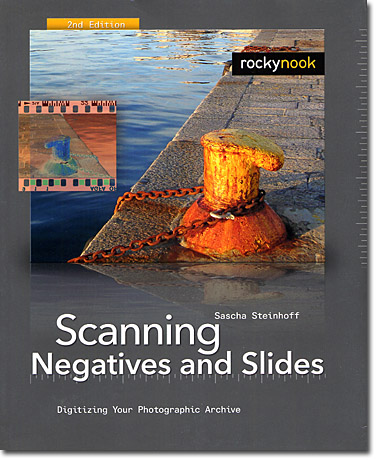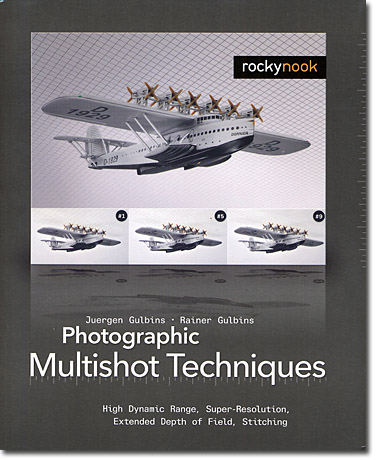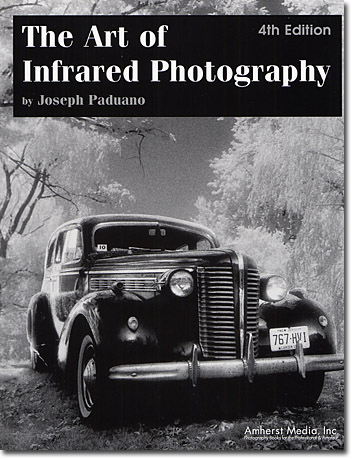Book Reviews for February 2012 |
Scanning Negatives and Slides
Digitizing Your Photographic Archive
by Sascha Steinhoff

Scanning film is easy, right? You just put the frame into the scanner, make a few settings and presto, you have a digital file. The only problem is that unless you really know what you are doing, then a file is about all you have. To get the best file to actually make a quality print from takes a whole lot more information and technique than you will find in any scanner manual. There are not many books on the market covering film scanning, and even less good ones, - until now. This new book covers everything you will need to know from A-to-Z of film scanning, and does it in a fully illustrated and easy to follow manor. And the book comes with a CD with even more goodies. Scanning Negatives and Slides gives you everything you will need to know about scanners, the settings to use for best results, file management, to the final output, and how to do it in a repeatable manner.
This soft cover book is about 8x10 inches, with 240 pages, retails for US-$44.95 - and is published by RockyNook and distributed by O'Reilly Media. It's also available in eBook format. It can be checked out at: www.oreilly.com. I Rate it: A+++
Photographic Multishop Techniques
High Dynamic Range, Super-Resolution, Extended Depth of Field, Stitching
by Juergen Gulbins and Rainer Gulbins

Digital imaging has now reached the advanced stage of being able to product top quality images that are even beyond those created using the first high-dynamic range imaging (HDRI) tools. This new imaging book will show you step-by-step how to make images that are tack sharp from front to back, and evenly light from edge to edge. Time and time again images fail because they are not sharp, or properly light in the areas they need to be, but this new book will help you fix those problems for good. Every step is fully illustrated along with all of the tools needed and their settings used so there is also no guesswork about any of it.
This soft cover book is about 8x10 inches, with 232 pages, retails for US-$34.95 - and is published by RockyNook and distributed by O'Reilly Media and can be checked out at www.oreilly.com I Rate it: A+
The Art of Infrared Photography
by Joseph Paduano

Infrared photography has always been a favorite subject of mine and I would always check out any books that I found on the subject. I saw an earlier edition of this book back in 1990 so I remembered the name and that it was pretty good info book on infrared work. It has gotten bigger and better. It was, and still is, only about infrared film photography and includes all of the information you will need if you should choose that method to shoot infrared. The how-to sections include the equipment needed, such as the different types of filters, processing charts with times and temperatures, and the use of several different film types, including color IR film. The book is well illustrated, but I do wish they had noted what film was used with each image.
This soft cover book is about 8x11 inches, with 104 pages, retails for US-$29.95 – and is published by Amherst Media at www.AmherstMedia.com.I Rate it: A
Infrared Landscape Photography
by Todd Damiano

This second book on infrared photography covers how the author deals with shooting landscapes, also with infrared film, but this time only using Konica IR film in a 6x7 camera. With each image the author discusses what conditions he found and how he dealt with them to overcome the normal hazards that come with shooting IR images. The information with the images will be very helpful to anyone wanting to do this kind of work, but I have a LOT of problems with the illustrations themselves. To begin with, Kinoca IR film is notorious for being flat with little to no detail in the shadows. Add to that the fact that all of the images in the book are printed on a matt surface more suited for text. What you get in this book are images with no detail in the dark areas, which in far too many of them is most of the image. Several of which are so dark that, unless you have been to these locations and know what is there, you can not even tell what they are of. The inside images do not look anything like what you see on the cover.
This soft cover book is about 8x11 inches, with 126 pages, retails for US-$29.95 – and is published by Amherst Media at www.AmherstMedia.com. I Rate it: B
Comments on NPN nature photography book reviews? Send them to the editor. NPN members may also log in and leave their comments below.
 Paul W. Faust is a self-taught Photographer, Writer, Digital Imaging, Photo Restoration, and Photo Stock Service professional. You can see more of his images on his web site at www.Impressions-of-Light.com plus two web galleries of his images at www.paul-w-faust.artistwebsites.com and www.redbubble.com/people/pwfiol.
Paul W. Faust is a self-taught Photographer, Writer, Digital Imaging, Photo Restoration, and Photo Stock Service professional. You can see more of his images on his web site at www.Impressions-of-Light.com plus two web galleries of his images at www.paul-w-faust.artistwebsites.com and www.redbubble.com/people/pwfiol.